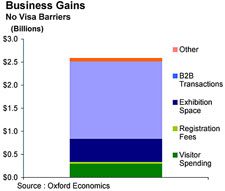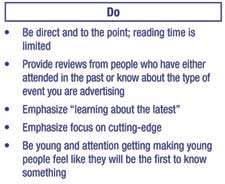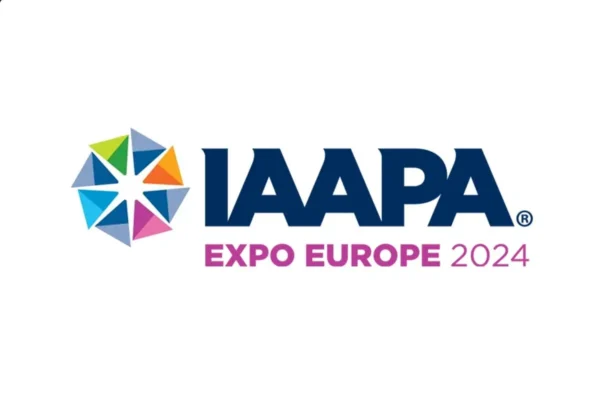The Center for Exhibition Industry Research (CEIR) recently released phase two of The Power of Exhibitions in the 21st Century: Identify, Discover and Embrace Change from the Point of View of Young Professionals.
CEIR also released The Economic Impact of International Non-Participation in the Exhibition Industry Due to US Visa Issues. Both studies were made available during Expo! Expo! 2010.
Building on the success of phase one, which sought to identify how to better attract young professionals to industry-wide exhibitions and events, the power of exhibitions study investigated the core messages that resonate with these attendees.
“I am delighted with the outcome of phase two of the generational study,” said Vicki Hennin, CEIR’s research committee chair. “There is no question that the in-depth and honest responses received speak volumes to the ever-changing exhibition model and the shaping of the future of the industry. The outcomes from this study will assist exhibition organizers and exhibit managers in planning their marketing and communications strategies for captivating a new audience of buyers and sellers using face-to-face opportunities to build their businesses and careers.”
When crafting marketing messages, the study’s findings indicate that in terms of influence, believability, relevance and likeability, the language that best resonates with young professionals speaks to the interest in attending events that give them the chance to engage, interact and experience the event.
Young professionals have an interest in engaging or interacting with live events as an extension of their regular behavior of interacting through other media.
Based on this study, exhibition and event organizers should create messages that are brief, to the point and clearly articulate what value the event offers young professionals; are respectful and do not condescend, make the event come alive, are new and exciting, and do not sound or read as something traditional.
As with phase one, both Millennials and Generation Xer’s who are 20 to 39 years old, were targeted for the study. CEIR contracted with Synovate, a global market research firm, to execute the project in two stages; first an online bulletin board discussion of young professionals followed by a complete quantitative survey.
Examining the quantitative stage, 640 young professionals were recruited to answer questions about effective key messaging and marketing channels that would interest and motivate them to attend an exhibition.
Participants were employed on a full-time basis, earned $30,000 or more annually, attended at least one exhibition per year and were not critically affiliated with the industry. Responses allowed for the creation of a profile outlining attendance patterns, reasons for attending, overall perceptions of exhibitions, what works in getting their attention, and mistakes to avoid.
Impact of U.S. visa issues

CEIR commissioned Oxford Economics to conduct the The Economic Impact of International Non-Participation in the Exhibition Industry Due to U.S. Visa Issues during the summer of 2010. The assessment was based on a nationwide survey and the CEIR Exhibition Industry Census.
Key findings of the research include
Visa issues precluded 116,000 international participants from attending U.S. exhibitions. This includes 78,400 international attendees and 37,900 international exhibitors who were hindered from participating.
With no visa barriers in place, the U.S. economy would realize increases in business sales tallying $2.4 billion, $2.6 billion including sales to foreign exhibitors. These gains include $1.5 billion in business-to-business trade, $540 million in registration fees and exhibition space spending, and a $295 million boost to visitor spending.
The new $2.4 billion in sales would be able to sustain over 17,500 jobs directly, 43,000 jobs overall, and generate three-quarters of a billion dollars in state and federal taxes.
“This study quantifies the importance of U.S. exhibitions in generating export trade and stimulating job growth,” said Steven Hacker, CAE, president of the International Association of Exhibition and Events (IAEE). “While we are mindful of the need for careful screening of international visitors entering the U.S., keeping our borders secure should not be at the expense of keeping our economy open for business. The U.S. will lose sales to other countries if we continue on this path. We intend to present these findings to several key federal agencies including the State, Homeland Security and Commerce departments and to work with officials to find an optimal solution.”
Sales would increase the most in the manufacturing and business services industries, with both sectors benefiting from the direct increase in sales from international attendees and from being part of the supply chain to other industries that directly gain sales.
“The current U.S. visa policy has become the number one obstacle for U.S. machine tool companies doing business in China,’ said Peter Eelman, vice president of Exhibitions & Communications, The Association for Manufacturing Technology.
Hotels would experience additional business of nearly half of the $295 million increase in visitor spending. Spending at restaurants from the additional 116,000 attendees would increase $60 million with retail purchases and ground transportation spending of $60 million.
For more information on CEIR research, contact Cathy Breden, CAE, CMP, executive director of CEIR at cbreden@ceir.org or (972) 687-9201.
| Home |
| People on the Move |
| National News |
| Regional News |
| Features |
| Tradeshow Calendar |






























